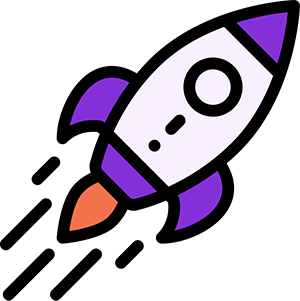Jasmine Chigbu has always been interested in medicine and driven by her passion to help people. Chigbu, a first year med student with an undergrad in clinical research and master’s degree in biomedical sciences, noticed a distinct lack of diversity in her undergraduate, graduate, and professional experiences. She was often one of a few females and ethnic minorities in the room, and fell into entrepreneurship through this realization. While Chigbu was researching scholarships for her graduate degree, she realized she could share her extensive research to help others. It became a personal passion project. Chigbu wanted to find a way to increase the representation of diverse groups by providing them with information about educational and professional opportunities, tools, and inspiration. Chigbu found a software development company, and through trial and error, built Minorities to Majorities, a mobile app to provide ethnic minority, female, LGBTQ and international students information about scholarship, internship, and fellowship opportunities.
“Be creative in the ways you want to reduce disparities. What’s creative in your approach? Minorities to Majorities is using tech. Use your niche—find a creative way to attack the same issue and you’ll have greater results. If you’re really passionate, that will keep you going.”
While being underrepresented is challenging and at times isolating, Chigbu encourages people to use their voice, even if they feel suppressed, and to let go of imposter syndrome.
“You might be under-represented, but you’re not under-qualified.”

“Find your community—social media, friends, a community of people to support you and champion you.”
Chigbu found support and mentorship from her boss while working at a biotech startup, and she was introduced to Nadiyah Johnson, founder of Jet Constellations, while pursuing her mission-driven project. Both are driven by their passion for promoting diversity and empowering underrepresented people—an instant partnership was formed. Johnson has helped develop MTM, and has joined their growing team as Operations Manager.

MTM is driven by their mission to transform the lives of students one opportunity at a time. They’ve started a crowd funding campaign to raise funds to generate their second generation app in order to better serve students, and they need your help. The funds will help expedite the scholarship, internship and fellowship search and application process for students through the utilization of AI, customized software and an improved algorithm. The goal is to scale their platform and mobile app into the leading educational and professional platform connecting students to opportunities across the globe.
MTM plans to optimize their mobile app and platform through the following methods:
- Develop an advanced algorithm with improved search and filtering functionality to provide users with curated experiences
- Build a web compatible platform to accompany the mobile app, improving user accessibility
- Leverage artificial intelligence to continuously populate our opportunities database
- Hire an enterprise development team to design, build and configure the app
In order to close the diversity gap, Chigbu says we need to speak up and speak out.
“Don’t be afraid to call out disparities. Call them out and provide examples, whether it’s at work, or school. Start small-one step at a time, making actionable steps.”
If you want to help, consider contributing to the campaign, or help by sharing this campaign with your friends, family, and social networks!

 Today I had the pleasure of attending a very interesting workshop on generative adversarial networks. The goal of the workshop was to teach attendees about deep learning and Generative Adversarial Networks (GANS). In the lab we used PyTorch, an open source deep learning framework, used to demonstrate and explore this type of neural network architecture. The lab was comprised of two major parts an introduction to both PyTorch and GANs followed by text-to-image generation.
Today I had the pleasure of attending a very interesting workshop on generative adversarial networks. The goal of the workshop was to teach attendees about deep learning and Generative Adversarial Networks (GANS). In the lab we used PyTorch, an open source deep learning framework, used to demonstrate and explore this type of neural network architecture. The lab was comprised of two major parts an introduction to both PyTorch and GANs followed by text-to-image generation.